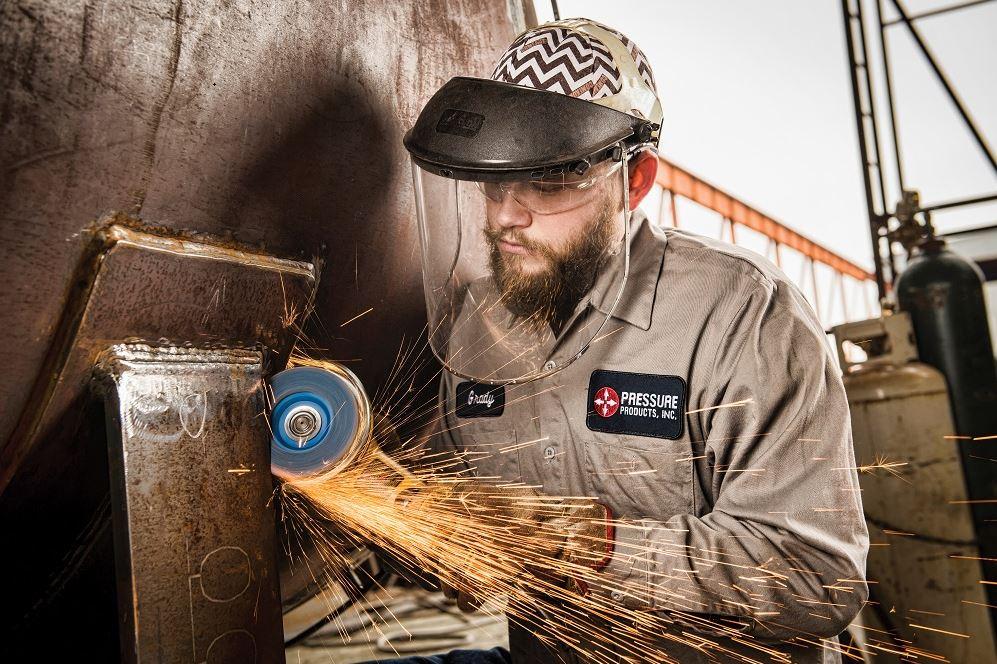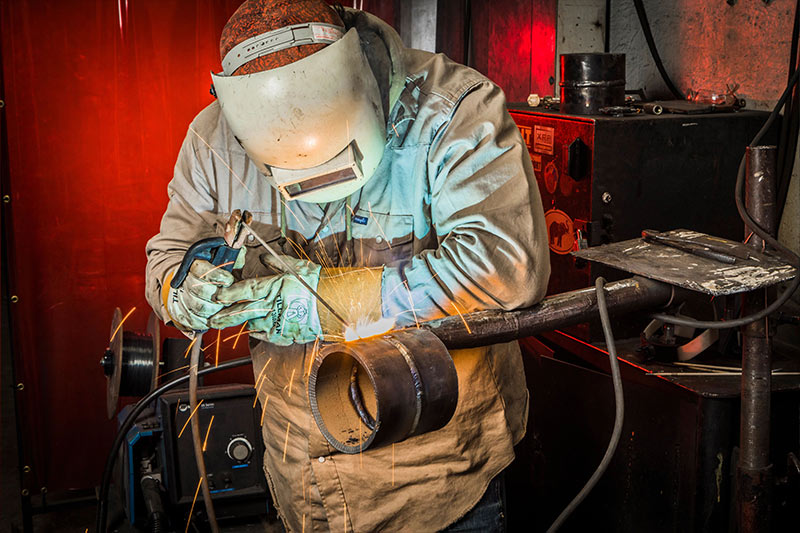Overlooked causes of weld misalignment and Belgrade Fabrication’s solutions
Everything about Welding: Secret Insights Into Techniques and Finest Practices for Success
Welding encompasses a range of techniques, each suited for particular products and applications. Recognizing these methods, such as GMAW, SMAW, and TIG, is important for achieving suitable outcomes. In addition, the best devices and safety and security techniques can not be overlooked. As prep work and repairing play vital functions in the welding process, understanding these aspects can significantly enhance the top quality of the final product. What are the key factors that ensure an effective weld?
Recognizing Different Welding Techniques
Welding strategies incorporate a variety of methods, each matched to particular applications and materials. Among the most typical techniques are Gas Metal Arc Welding (GMAW), Shielded Metal Arc Welding (SMAW), and Tungsten Inert Gas Welding (TIG) GMAW, likewise referred to as MIG welding, is prominent for its speed and flexibility, making it suitable for slim materials. SMAW, or stick welding, is preferred for its simpleness and efficiency in outside environments, particularly with thicker metals. TIG welding offers precision and control, making it appropriate for complex job and non-ferrous steels (Montana Mobile Welding and Repair Welding). Each method has its one-of-a-kind benefits and factors to consider, permitting welders to choose the very best technique based upon the job's demands, product kind, and desired results. Understanding these methods is vital for successful welding
Crucial Welding Devices and Devices
While various welding techniques require specific abilities, the appropriate equipment and devices are similarly crucial for achieving high quality results. Important welding tools includes welding devices, which vary depending on the method-- such as MIG, TIG, or stick welding. Safety gear, including aprons, headgears, and handwear covers, warranties security and convenience throughout the process. Additionally, fixtures and clamps help protect materials in area, ensuring precision in welds. Consumables like welding poles, wire, and protecting gas are additionally critical elements that affect the quality of the weld. Additionally, tools such as cutters and grinders facilitate surface preparation and post-weld ending up, contributing to a specialist end result. Spending in premium devices eventually boosts the efficiency and performance of welding jobs.
Safety And Security Practices in Welding
Appropriate security techniques are crucial in the welding market to safeguard workers from prospective risks. Welders have to use ideal personal protective equipment (PPE), consisting of helmets with correct shading, gloves, and flame-resistant apparel. Adequate air flow is crucial to decrease direct exposure to unsafe fumes and gases produced during the welding procedure. Additionally, employees should be trained in the right handling of welding equipment to stop crashes. Fire safety steps, such as maintaining flammable products far from the welding location and having fire extinguishers conveniently available, are necessary. Routine examinations of equipment and work spaces can aid recognize prospective threats before they lead to accidents. By sticking to these security methods, welders can create a much safer working environment and minimize risks related to their profession.
Preparing Materials for Welding
Preparing materials for welding is an important step that greatly influences the quality and integrity of the last product (Montana Mobile Welding and Repair Welding). Proper prep work involves cleaning up the surface areas to eliminate impurities such as oil, dirt, and rust, which can endanger the weld. Strategies such as grinding, fining sand, or using solvents are typically used to attain a tidy surface area. Furthermore, making certain that the products mesh well is important; gaps can result in weak welds. It's likewise crucial to think about the positioning and positioning of the components, as this will certainly impact the simplicity of welding and the last end result. Picking the suitable filler product and making sure compatibility with the base steels is important for achieving solid, resilient welds.
Tips for Achieving High-Quality Welds
Accomplishing high-grade welds requires attention to detail and adherence to best methods throughout the welding procedure. Proper joint prep work is crucial, making sure surface areas are tidy and free from impurities. Picking the suitable filler product and welding technique based on the base steels is essential for optimal bonding. Preserving consistent travel rate and angle while welding can prevent defects and promote uniformity. In addition, managing heat input is vital; too much warmth can result in bending and weakened joints. If necessary, routinely inspecting the welds throughout the procedure allows for prompt adjustments. Utilizing ideal post-weld therapies, such as cleansing and stress alleviation, can improve the toughness and honesty of the weld, inevitably ensuring an effective outcome.
Fixing Common Welding Issues
Welding frequently presents obstacles that can impact the high quality and stability of the end product. Typical problems such as porosity, inconsistent weld beads, and overheating can emerge, each requiring specific troubleshooting methods. Comprehending these problems is important for welders to boost their skills and attain optimal results.
Porosity Problems Described
Porosity can often be ignored, it remains a vital issue in welding that can jeopardize the integrity of an ended up product. Porosity describes the presence of tiny gas pockets within the weld bead, which can lead and damage the joint to early failure. This issue normally develops from pollutants, wetness, or improper protecting gas insurance coverage during the welding process. To alleviate porosity, welders need to verify that the base materials are dry and clean, use appropriate shielding gases, and preserve constant welding specifications. On a regular basis examining the tools and setting can additionally aid recognize possible problems before they manifest in the weld. Resolving porosity successfully is crucial for accomplishing strong, durable welds that fulfill top quality standards.

Irregular Weld Beads
Inconsistent weld beads can greatly affect the high quality and stamina of a finished product. Numerous factors contribute to this issue, consisting of incorrect traveling speed, inaccurate amperage settings, and irregular electrode angles. When the welder relocates also swiftly, a bead might show up narrow and lack infiltration, while relocating too slowly can trigger excessive accumulation. Furthermore, making use of the incorrect amperage can result in either undercutting or too much spatter, both of which compromise weld stability. The welder's strategy, such as irregular torch movement, can additionally cause unequal grain appearance. To mitigate these issues, welders need to concentrate on maintaining consistent, regulated activities and making sure correct devices settings to achieve uniformity in their welds. Consistency is vital to attaining dependable and solid welds.
Getting Too Hot and Warping Issues
Excessive warm during the welding procedure can bring about considerable overheating and contorting issues, affecting the structural stability of the work surface. These issues commonly show up as distortion, which can endanger positioning and fit-up, making further setting up testing. Elements adding to overheating consist of the choice of welding parameters, such as voltage and Belgrade take a trip rate, along with the sort of product being welded. To minimize these issues, welders ought to maintain consistent travel rate and ideal heat input while checking the work surface temperature level. Additionally, preheating or post-weld warm therapy can help minimize stress and anxieties triggered by rapid air conditioning - Montana Mobile Welding and Repair Belgrade Welding. Routine inspection and adherence to finest methods are vital in avoiding getting too hot and making certain the durability and reliability of welded structures
Often Asked Inquiries
What Are the Job Opportunities in the Welding Industry?
The welding market provides diverse career possibilities, including positions as welders, inspectors, engineers, and educators. Experts can function in manufacturing, building and construction, aerospace, and automobile markets, gaining from strong need and competitive wages in various duties.
How Can I Improve My Welding Rate Without Compromising Quality?
To enhance welding rate without sacrificing quality, one ought to practice effective methods, maintain equipment, enhance settings, and improve hand-eye coordination. Normal training and looking for responses can additionally considerably add to attaining quicker, top quality welds.
What Qualifications Are Offered for Welders?
Many accreditations exist for welders, consisting of those from the American Welding Society (AWS), the National Center for Construction Education and Research (NCCER), and different industry-specific organizations. These credentials enhance employability and show skill efficiency.
How Does Welding Impact the Residences of Metals?
Welding influences the properties of steels by modifying their microstructure, which can result in adjustments in firmness, ductility, and toughness. Warm input and cooling prices during the procedure substantially influence these material attributes.
Can I Weld Dissimilar Metals With Each Other?
